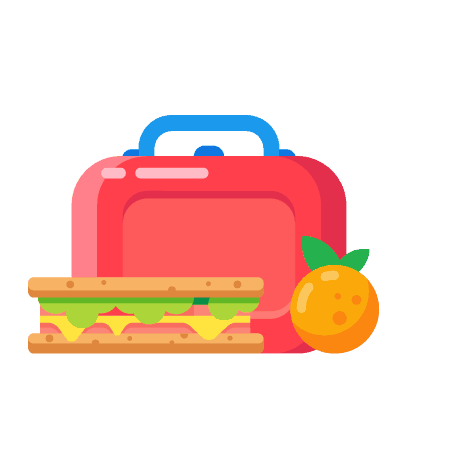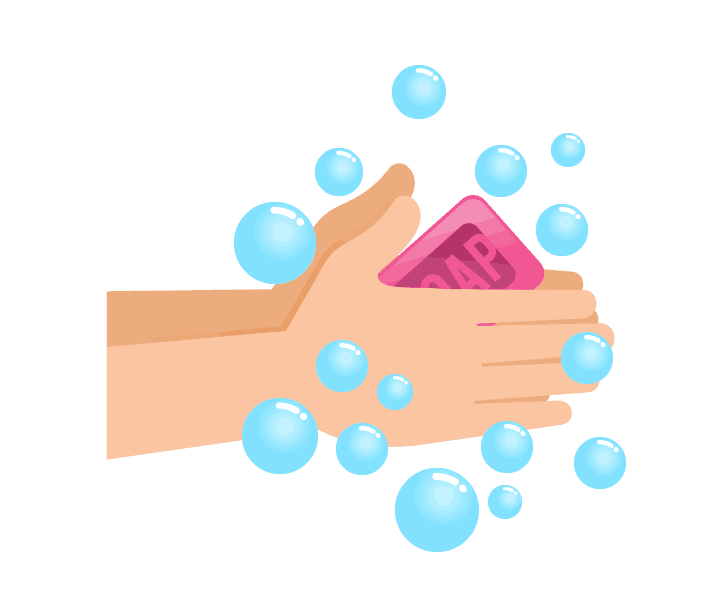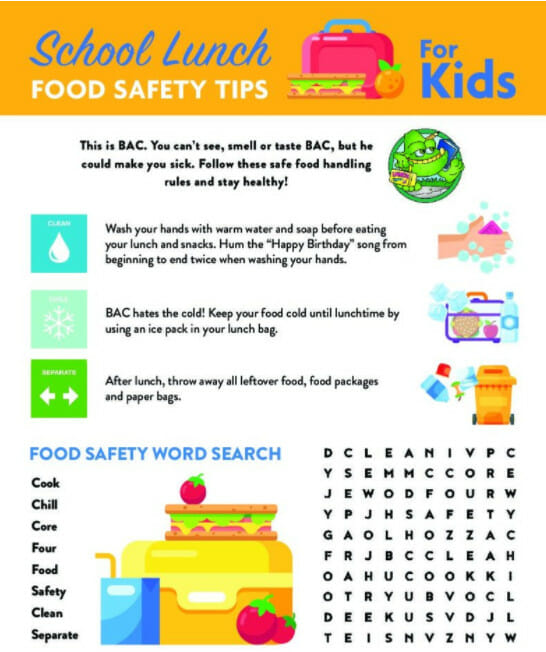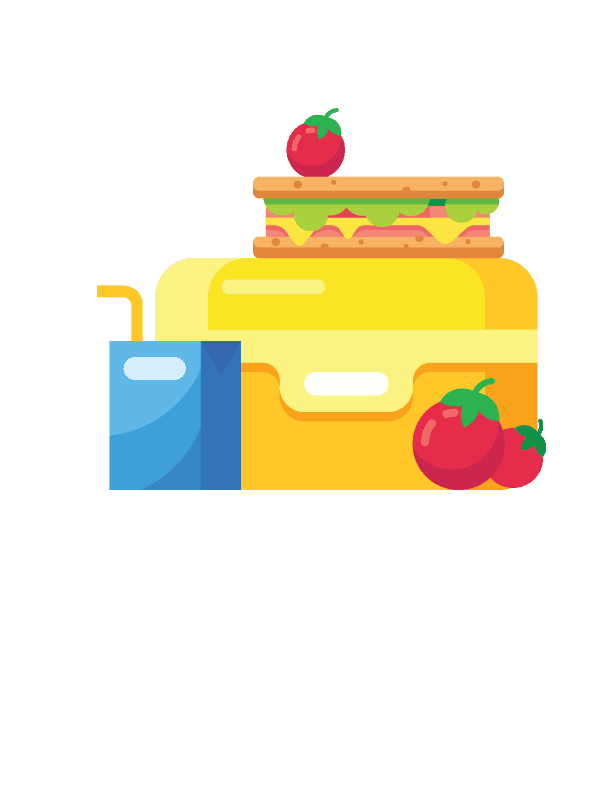 When it’s back-to-school time, Fight BAC! wants to remind parents and families across the country that the first important lesson of the school year is packing a safe lunch. All it takes is a quick refresher course:
When it’s back-to-school time, Fight BAC! wants to remind parents and families across the country that the first important lesson of the school year is packing a safe lunch. All it takes is a quick refresher course:
- When it’s time to handle food for your child’s lunch, remember to always keep it clean. Wash your hands with warm water and soap for at least 20 seconds before and after handling food. Use hot water and soap to make sure food preparation surfaces and utensils are clean.
 Your child’s lunch could include perishable items (sandwiches, fresh fruit) and shelf-stable items (crackers, packaged pudding). Perishable items need to be kept chilled to reduce risk of foodborne illness.
Your child’s lunch could include perishable items (sandwiches, fresh fruit) and shelf-stable items (crackers, packaged pudding). Perishable items need to be kept chilled to reduce risk of foodborne illness.- Rinse fresh fruits and vegetables under running tap water, including those with skins and rinds that are not eaten. Blot dry with a paper towel before packing them in your child’s lunch.
- You can prepare sandwiches or other perishable items the night before. Store lunch items in the refrigerator until your child is ready to go to school.
- Insulated, soft-sided lunch totes are best for keeping perishable foods chilled. Two cold sources, such as a small frozen gel pack or frozen juice box, should be packed with perishable foods. Frozen gel packs will keep foods cold until lunchtime, but are not recommended for all day storage.
- Keep hot foods hot by using an insulated bottle. Fill the bottle with boiling water and let it stand for a few minutes. Empty the bottle and then fill it with piping hot food. Keep the bottle closed until lunchtime.
 Make sure your child knows to throw out all used food packaging and perishable leftovers. Do not reuse plastic bags as they could contaminate other foods leading to foodborne illness.
Make sure your child knows to throw out all used food packaging and perishable leftovers. Do not reuse plastic bags as they could contaminate other foods leading to foodborne illness.- Tell your child to use the refrigerator at school, if one is available. If not, make sure he or she keeps the lunch out of direct sunlight and away from radiators, baseboards and other heat sources found in the classroom.

